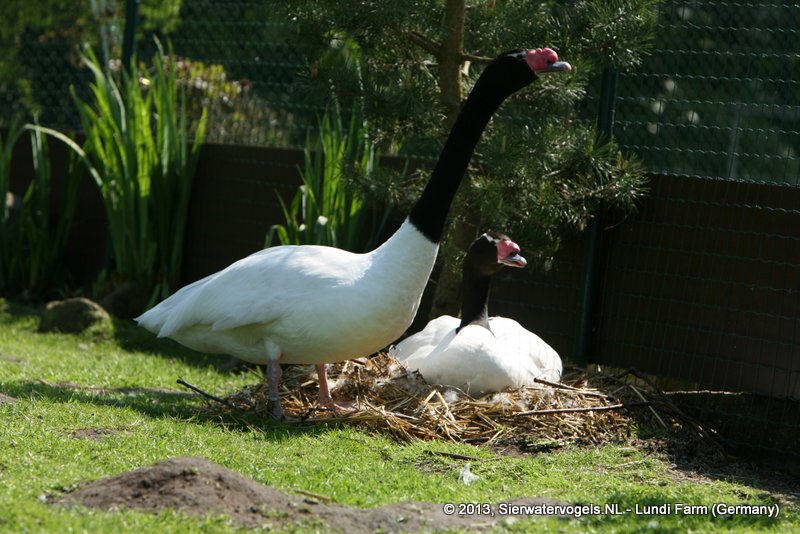
Black-necked Swan (Cygnus melanocorypha)
Species name
- Dutch name:
- Zwarthalszwaan
- English name:
- Black-necked Swan
- German name:
- Schwarzhalsschwan
- French name:
- Cygne
- Scientific name:
- Cygnus melanocorypha
Scientific classification
- Order:
- Anseriformes
- Family:
- Anatidae
- Onderfamilie:
- Anserinae
- Genus:
- Cygnus
Description
- Description:
The elegant Black-necked swan is probably the most attractive one of the swan family.
An unmistakable bird with bold patterns, Black-necked swans are characteristic and majestic inhabitants of southern South Americas wetlands. They are easily distinguished by their immaculate white body feathers that contrast sharply with their velvety black head and neck. The bill is blue-gray in color and has a noticeable, double-lobed scarlet-colored knob, called a caruncle, at its base. The eyes are surrounded by a thin white line which goes along the sides of the head to the rear.Males and females are similar in appearance, though females are generally slightly smaller.
Juvenile:
The juvenile does not have a caruncle, and has a head and neck that is more brownish-black, with varying amounts of brownish-tipped and grayish-flecked feathers.
- Behaviour:
During the breeding season they become territorial and aggressive, especially against humans. It´s the same behavoir as Crested Ducks.
Standard Measurements
- Body Length (cm):
- The male (drake) of the Black-necked Swan measures approximately 102-124 centimeters. The female measures approximately 102-124 centimeters.
- Body Weight (grams):
- The male will weight about 3500-6700 gram. The female will weight about 3500-6700 gram.
The weight is notoriously variable and can only be used as indication!
- Habitat:
The black-necked swans needs water and grassland. A pond with an area of 12-15 m2 or larger and a depth of one and a half meters is desirable in aviculture. The depth of the pond is important for mating. Furthermore, scarce low vegetation near the pond is possible. Banks should be at a shallow angle to allow easy entry to and exit from the water; this is particularly important if cygnets are to be parent reared. More than one pair may be kept in very large parks where each pair can establish a breeding territory. Swans appreciate water weed and grass, but other green foods such as lettuce and cabbage may be used as substitutes if necessary. They are relatively slow eaters and care should be taken in mixed enclosures that they get sufficient food.
Good amounts of vegetation should be provided for nest building, with cover available for early-nesting species. Parent hatching and rearing is usual. Swans are able to defend their young against most predators, and their highly-aquatic lifestyle also makes cygnets less vulnerable. Unlimited green food should be available for the cygnets.
- Note:
Black-necked swans are easy to manage, but territorial and aggressive, particularly in the breeding season and especially to other swans and to the similarly-marked Common shelduck (Tadorna tadorna); they generally leave other ducks and geese alone. A separate enclosure is recommended.
These swans require an extensive area of water, preferably with ample underwater vegetation for feeding. They are somewhat cold-sensitive and prone to frost-bitten feet; a winter pen which is draught-proof and has thick straw on the ground is suggested, and a shelter may be required in winter in colder climates.
Black-necked swans breed fairly readily; they are bred regularly in some collections. They build a large mound of vegetation and a nest-foundation of twigs and reeds may be pre-build on an island or the shore to encourage breeding. Eggs may be laid as early as February, even in cold (near-freezing) conditions, but they are usually laid early March to end of May. The cygnets are best parent-reared; prolonged fine dry weather and plentiful water-weed are best for rearing. The cygnets are often carried on their parents' backs. These swans may double-brood.
Hybridisation with Mute swan (Cygnus olor) is possible.
- Breeding:
- The female Black-necked Swan usually lays from 3-7 creamy white and not shiny eggs and incubates them for 34-36 days.
- Artificial incubating:
The ideal relative humidity for incubating most waterfowl eggs is 55% (ground nesters) and 40% (cavity nesters). The temperature is usually 37.4°C. Set ventilation as recommended by the incubator manufacturer. Eggs must be turned, either automatically or by hand, a minimum of 4 times a day. As the duckling develops there is a loss of water from the egg and the air sac gets bigger. In normal development of an egg with a 34-36 days incubation, the air sac occupies about a third of it three days earlier. Cleanliness is vital and ideally eggs should be moved to a separate hatcher at this point, where the humidity should be increased to 65% and even higher once they have pipped internally.
- Bird banding:
- Recommended closed leg band ring size for the Black-necked Swan is 20 mm.The leg band ring can only be applied on a young swan at around 16-18 days old.
- It doesn't matter what leg that you band, but it's good to have a consistent system. Suggested: Left leg = Female, Right leg = Male
- Rearingfeed:
-
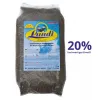
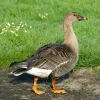

Floatable special rearing feed for all types of aquatic ornamental fowl - especially for the cultivation of trees as well as greening ducks.
This well-balanced complete feed with 20% protein content convinces above all by its good compatibility and forms the basis for visibly healthy growth from day one.
Made exclusively from wholesome and selected raw materials, Lundi Micro Regular is also ideally suited for the year-round feeding of waterfowl.
- Maintenance food:
-



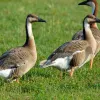

Lundi Regular with a protein content of 20%, valuable Spirulina and high-quality by-products is optimally balanced in its composition maintenance food for water ornamental fowl of all kinds. Especially green teal and Whistling ducks that are not dependent on a very high protein content, are well supplied.
Lundi Regular contains all the minerals and vitamins in full form that are important for the animals. Therefore also suitable as breeding food.


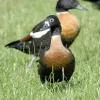


Floating full food for all sea ducks, green ducks, eider ducks and geese, especially in the moulting and breeding phase ideally suited. Packed with wholesome raw materials, natural vitamins and trace elements, this performance food with a protein content of 30% forms the basis for lifelong vitality.

